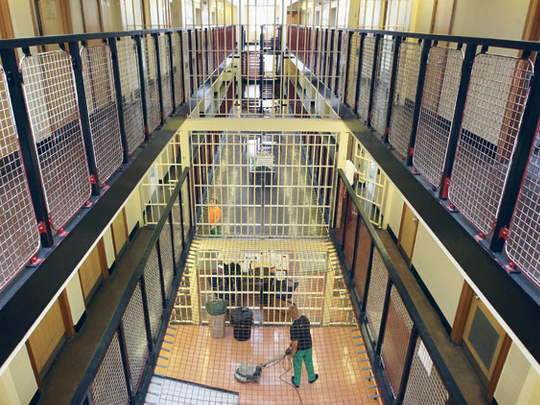
London: The number of prioners in England and Wales is predicted to rise by a further 3,500 to a record 88,500 by 2016 unless there are major changes in sentencing policy, according to new Ministry of Justice projections published today .
The official estimates show that even if Ken Clarke's promised "rehabilitation revolution" succeeds in persuading the courts to adopt a less punitive sentencing policy it is unlikely to cut the current 85,115 prison population by any more than 2,000.
The annual prison population projections show that an even more punitive approach, encouraged perhaps by tougher "law and order" justice and home secretaries, could push the jail population up to 93,600 by 2016.
However, the new projections indicate an underlying slowdown in the growth of prisoner numbers and question the need for the coalition government to maintain Labour's massive prison building programme aimed at creating 96,000 prison places in England and Wales.
Low projection
The annual justice ministry bulletin says that this year's "no change" projection is lower than in 2009 despite the withdrawal of the early release scheme which is estimated to have increased the daily prison population in England and Wales by 1,200.
"This is largely due to a recent flattening of the prison population, which has happened despite upward pressures from the withdrawal of end of custody licence in March 2010," says the justice ministry bulletin.
Total prison numbers in England and Wales rose by 1,500 between June 2009 and June 2010 with the scrapping of the early release scheme accounting for most of the rise.
The justice secretary, Ken Clarke, has ordered a review of sentencing and rehabilitation policy to be carried out this summer in the hope of arresting the continued rise in the jail population which many commentators regard as unsustainable.
The justice ministry figures confirm a 66 per cent rise in prisoner numbers since 1995 and identifies the two main drivers: tougher sentencing and enforcement policies and a more serious mix of offences coming before the courts.
In the meantime, Clarke has continued with Labour's programme to build a further prison, signing a contract to build a "supersized" 800-place prison in east London the day after his landmark speech broke with the "prison works" policies of both Tory and Labour predecessors.
Clarke, however, will not necessarily cutback on new building projects but has talked instead of using the new capacity to close "old and inefficient" jails, some of which date back to pre-Victorian times.
Talks have already been opened with the Duchy of Lancaster over the future of Lancaster Castle, a category C training prison parts of which date back to the 12th century, perhaps the oldest prison in Europe with walls up to 5ft thick.
Last month, a leaked justice ministry study, Visions for Estate, led to speculation that Dartmoor and Exeter prisons could also be shut and replaced by a new jail in east Cornwall. It also indicated that the future of Dorchester prison is under discussion.
Reform plan
The prison population projections say that the new estimates take no account of any impact which may result from Clarke's structural reform plan: "As such these projections provide a set of ‘baseline' scenarios against which the impact of future changes can be assessed."
Jon Collins of the Criminal Justice Alliance said: "While the new government has made a promising start on criminal justice policy, contracts for new prisons continue to be signed and no decision has yet been taken to put on hold or scale back the prison-building programme.
"These projections should be all the evidence that the government needs to announce an immediate moratorium on prison building until long-term decisions can be made about the future of prisons policy."
Population in prisons
- 85,115: current prison population
- 93,600: expected increase in jail population
- 96,000: prison places in England and Wales












